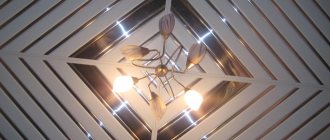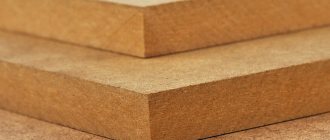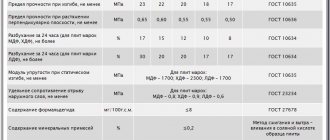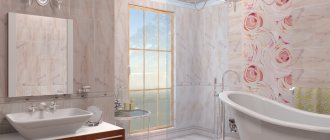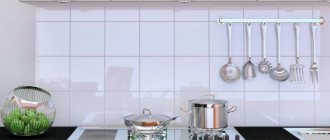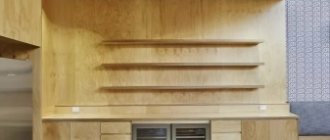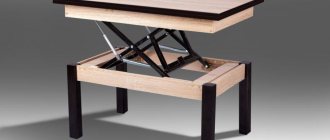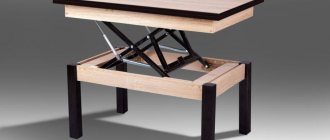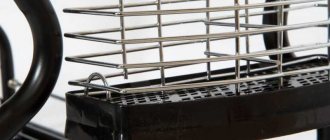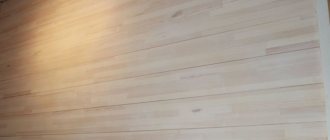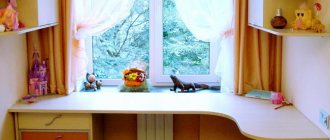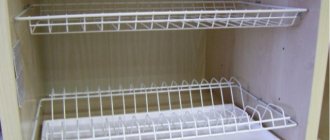Popular siding sizes (photo No. 1)
To make the facade of the house look harmonious, you need to plan in advance how to arrange the panels and where the joints will be. To do this, it is important to know the exact dimensions of the siding. In addition, this way you can calculate the required amount of materials accurate to one panel.
The difficulty lies in the fact that depending on the material of manufacture and even the manufacturer, the siding parameters may change.
Therefore, let's start with the types. There are six of them:
- fiber cement panels
- wood siding
- metal siding
- polymer siding
- facade panels (basement siding).
Next, we will analyze in detail the dimensions, purpose and features of each of these types.
For calculations we will use two main parameters - the width and length of the siding. Important: almost all panels have perforations in the upper part for fastening. The next panel overlaps it, so the real (useful) width will be 10-20 mm less than the actual one. This must be taken into account when making calculations.
We also provide the thickness of the panels for comparison.
This parameter indirectly speaks about strength. The thicker the siding, the stronger it is. But the thinner it is, the more flexible it is, as a rule. However, as you will understand later, this is not always the case. !
At the top of the panel there is perforation for fastening. It overlaps with the next panel. Therefore, the useful width of the siding is less than the actual width.
Fiber cement siding
Fiber cement siding (photo No. 2)
This is a durable finishing material with a beautiful relief pattern. It does not change its physical characteristics either in heat, cold, or during heavy rains. But it is used infrequently in private housing construction: it is expensive, heavy and more demanding in operation than its competitors.
If complexity and price do not scare you, the material parameters will be useful to you. Dimensions of fiber cement siding panel:
- ➠ Thickness: ranges from 6 to 35 mm
- ➠ Width: from 305 to 1500 mm
- ➠ Usable width: similar, from 305 to 1500 mm
- ➠ Length: 0.45 – 3.6 m
- ➠ Area: on average from 1.2 to 2.5 square meters. m
If you need panels shorter/longer, wider or narrower, explore the range of different manufacturers. The quality in most cases will be decent, but you can choose the appropriate siding parameters to reduce the number of trims and unnecessary costs.
Calculation of the required amount of material
It is best to purchase finishing materials all at once. It is important that one purchase is enough to decorate the entire house . But overpaying for extra material is also an unacceptable luxury. To purchase the required amount of material, it is necessary to make the appropriate calculation. There are three ways to calculate the exact material requirement.
- The first and most reliable way is to invite a measurer from the company or store where the purchase will be made. He will be able to more accurately determine the scope of work: calculate the finishing area and determine the exact number of component elements (corners, profile, ebb, platbands). An inexperienced person may miss some components and will need to place an additional order. A qualified specialist takes responsibility for the complete compliance of the material and can determine on the spot what is needed and what can be dispensed with.
- The second way is using a computer program . There are special calculators that will help you calculate materials and all components online. To do this, the dimensions of the building, door and window openings and other parameters are entered into the appropriate windows, and the program performs a full calculation of the material and its cost. Most often, such a program is used by specialists in their work or to determine estimated costs.
- Third way - independent calculation. To perform an independent calculation, you must have technical knowledge and at least a little work experience. But using the calculation algorithm, it is quite simple to do it.
- The area of the entire facade must be divided into parts. The area of each wall is calculated separately, and then the area of all walls is summed up. This determines the total area of the façade .
- The number of door and window openings is determined, the area of each is calculated and summed up. This is the total area of the openings .
- The total area of the openings is subtracted from the total area of the facade. the area for finishing with siding is determined .
- It is necessary to determine the dimensions of the roof overhangs . This is necessary to know the length of the j-profile and the parameters of the soffits used to finish the overhangs.
- Calculate the perimeter of the building to determine the length of the ebb, starting and finishing strips.
- Calculate the number of external and internal corners , for this you need to know the height of the building.
- Determine if the length of the wall is greater than the length of the siding panel, then a joining profile will be required, and perhaps more than one.
Having determined the volume of material, you can find out the cost of finishing the house with siding and place an order from the manufacturer or sales representative.
Return to content
Wooden siding for exterior decoration: dimensions and application features
Wooden siding for exterior decoration (photo No. 3)
Wood is a beautiful, environmentally friendly cladding.
To decorate the facade, different wooden panels are used: planken, blockhouse, American, etc. But traditional lining is not suitable for interior decoration - it is not designed for use in cold weather, rain and sun.
Wooden products will withstand harsh natural conditions only if strict requirements for their dimensions are met:
- ➠ Thickness: 18 – 23 mm
- ➠ Width: 200 – 220 mm
- ➠ Usable width: 180 – 220 mm
- ➠ Length: 3 – 4 m
- ➠ Area: 0.55 – 0.88 sq. m
If these parameters are not met, the board may warp (twist) during operation.
Wood siding is the most whimsical. It must be regularly treated with protective agents against moisture, pests and fire. That's why it is rarely used. As a rule, for cladding houses in eco-style.
Accessories
The use of component elements makes the design of the house integral, enhances the strength of connections, heat protection, and water resistance. They seal the joints of panels, window and door openings.
Accessories include:
- starting bar;
- galvanized profile (U-shaped section) for installation of siding;
- internal and external corner;
- drain rail;
- F-profile for the edge of the roof;
- soffits for the lower finishing of overhangs;
- H-rail for sealing joints;
- finishing strip;
- near the window strip;
- clypeus;
- molding for the junction of the gable and roof.
The components must be made of the same material as the siding, preferably from the same manufacturer. The color can be selected based on contrast to give a special decorative effect to the structure.
Watch the following video for an overview of siding components:
Metal siding for the house: sizes and types
Metal siding to look like wood (photo No. 4)
Siding is made from aluminum or steel and zinc. The first option is lighter, the second is stronger. Metal siding imitates a wooden facade, but does not burn or rot. Plus - you can choose panels according to length - up to 6 m. Thanks to this, you can often do without a connecting strip.
Average parameters of metal siding:
- ➠ Thickness: 5 – 13 mm
- ➠ Width: 190 – 210 mm
- ➠ Usable width: 170 – 190 mm
- ➠ Length: from 0.5 to 6 m
- ➠ Area: from 0.25 to 3 square meters. m
Metal siding does not have a heat-insulating effect. It is most often used not in private housing construction, but for cladding industrial and commercial buildings.
The best manufacturers
Mitten
. Canadian manufacturer, a world leader in the production of siding panels. The company’s pride is the absence of quality claims for 50 years since its founding. It is a standard for many manufacturers of materials for facade finishing. Products meet and sometimes exceed the most stringent standards.
The only drawback is the high price compared to its closest competitors.
Royal
. Another manufacturer from Canada. It produces products using a unique patented formula. No lead or heavy metals are used in production. Panels of this brand are ideal for use in regions with harsh climates.
Boryszew
. Polish company with more than a century of history. Occupies a leading position in the mid-price category. Attractive with unusual color and texture. The products contain special components that prevent the occurrence of swelling and cracks.
Dock
. Russian manufacturer operating under the control of a German company. The product is distinguished by the presence of a hurricane-proof lock, which provides additional protection against damage. It has an aesthetic appearance thanks to its matte surface.
KANADA Plus
. A joint venture of Russian and Canadian specialists. The products are superior to expensive foreign analogues in many operational and technical parameters. The panels resist hurricane winds and severe frosts well and do not fade.
Polymer siding: types and parameters
Vinyl siding (photo No. 5)
Polymer siding is the market leader. It accounts for 50% of sales volumes of facing materials. The popularity of such siding is associated with its versatility, affordable cost, lightness and ease of installation. The panels do not rot, do not rust and do not support combustion.
!
Polymer siding is the market leader. It accounts for 50% of sales volumes of facing materials.
When temperature fluctuations occur, the panels seem to breathe - they expand and contract. This does not affect their quality. Properly installed polymer siding does not deform even with sudden temperature changes above 0 degrees.
There are several types of polymer panels on the market:
- Vinyl siding is frost-resistant and is perfect for most regions of Russia, especially the northern ones.
- Acrylic siding is UV resistant, does not fade and is suitable for southern, sunny regions.
- Foam siding - with increased thickness. Improves the thermal insulation properties of wall structures. It looks exactly like wooden panels - in texture, color and thickness.
- Blockhouse is vinyl or acrylic siding that imitates rounded timber. In terms of performance characteristics, it corresponds to panels made of vinyl and acrylic, but differs in shape and size.
Varieties
When choosing siding for exterior use, you need to calculate the required number of panels.
The dimensions of siding are directly related to the material used for its production, as well as its purpose. The construction market is ready to offer a wide range of options for raw materials for siding. And the interesting thing is that almost each of them has its own special dimensions. They may differ significantly from each other.
Based on their purpose, panels can be divided into façade and basement panels.
The material is divided into the following groups:
- plastic (vinyl, acrylic and PVC);
- metal;
- wood;
- fiber cement.
I propose to first talk about the basement version of siding, and also discuss all types of facade panels for the house and external walls of buildings.
Vinyl siding size
Wood-look vinyl siding (photo No. 6)
Average market sizes of classic vinyl siding:
- ➠ Thickness: 0.6 – 1.3 mm
- ➠ Width: 220 – 275 mm
- ➠ Usable width: 200 – 255 mm
- ➠ Length: 3 – 3.75 m
- ➠ Area: 0.65 – 0.85 sq. m
They differ from one manufacturer to another. Siding that is too thin can be brittle in the winter and not last long. Although thickness is not an indicator of quality. Panels need to be assessed comprehensively based on a number of parameters.
For orientation, here are the dimensions of Alta-Profile siding:
- ➠ Thickness: 1.1mm
- ➠ Width: 205, 230 mm
- ➠ Relief height: 12 mm
- ➠ Length: 3 or 3.66 m
Vinyl is the most common type of siding. It is suitable for any private house, cottage, bathhouse, barn, garage, and other buildings and structures.
Acrylic siding has the same dimensions as vinyl siding. Therefore, we will not dwell on it in more detail.
Blockhouse dimensions
PVC blockhouse (photo No. 8)
Blockhouse panels can be single-fracture or double-fracture, large and small. Accordingly, the size of siding for cladding a house under timber will vary. For example, a blockhouse from Alta-Profile has the following parameters:
- ➠ Thickness: 1.1mm
- ➠ Width: 200, 226 or 320 mm
- ➠ Relief height: 15, 34 or 37 mm
- ➠ Length: 3 or 3.1 m
Blockhouse (log siding) will be an excellent alternative to a wooden facade in an eco-friendly or traditional Russian style.
Facade panels: dimensions and features
Stone-look facade panels (photo No. 9)
Facade panels (basement siding) were first used to cover the base. They are made from polymers, but are thicker and stronger than classic siding. Today they cover the entire façade.
Basement siding imitates stone or brickwork. For maximum verisimilitude, the panels are uneven in shape to avoid a mosaic effect. The size of basement siding for cladding depends on the specific collection.
For example, Alta-Profile panels have the following size range:
- ➠ Thickness: 16 – 27 mm
- ➠ Width: 440 – 590 mm
- ➠ Length: 0.8 – 1.26 m
Facade panels combine well with each other, with vinyl, acrylic siding, blockhouse and most other finishing materials.
Sheathing options
Since most facade materials are in the form of boards, the coating is striped. The lamellas can be placed horizontally, vertically or in a combination of cladding directions.
Horizontal layout is best used when:
- there are no large distances between windows, doors, cornices and other facade elements;
- the dominant elements are vertical;
- the design has sharp-angled gables.
Vertical cladding looks best in combination with windows that dominate the horizontal direction.
Combined cladding is the best option for houses with complex facade configurations.
